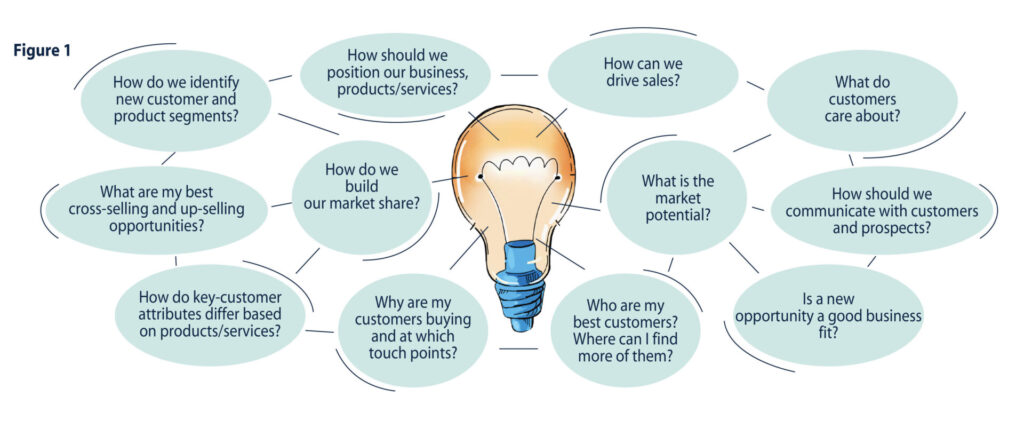I often hear people confusing the terms “marketing” and “advertising.” Some consider advertising to be any activity that promotes their business. Others think marketing is interchangeable with sales, probably because the terms are often lumped together, as in “sales and marketing.” And often, the terms marketing and advertising are used interchangeably, even though they are not the same activity.
So, what is marketing? Marketing, by its very nature, is concerned with the interaction between the company and the marketplace. Marketing presents the overall picture of how a company promotes, distributes, and prices its products or services. It focuses on creating a market for the business, product, or service and building a reputation. Marketing is a long-term process and can be expensive, but it really should come first. On the other hand, advertising is a short-term process of making a business, product, or service known to an audience. Advertising is typically a paid element of marketing, and it can take many forms, including print media, broadcast, outdoor, geofencing, targeted display, digital audio, video, over-the-top (OTT), and email, to name a few.
Understanding the differences between marketing and advertising helps companies maximize their budgets, teams, and market reach. Sales, on the other hand, focuses on the transaction, selling, and delivering the product or service to the customer. Both sales and marketing need to be performed separately but in combination in a coordinated fashion to be successful. To use a music metaphor, you can have great lyrics, and you can have great music. When you have a great song, you typically have both. When sales and marketing have a defined plan and work together in concert, your business will produce great results! Does your business have a formal marketing plan?
There are many benefits to having a well-defined plan. If your business is like most, you don’t have an unlimited budget to spend on advertising. Other types of marketing can capitalize on your advertising by getting attention for your business, products, or services and can spread your message further. Marketing-driven companies have a process designed to both precipitate and make strategic decisions, as well as create strategic visions. Having a plan helps precipitate the consideration of strategic choices and focuses on a long-range view. We like to refer to it as always keeping the “end game in mind.” In our experience, having a well-integrated, disciplined marketing plan, never before applied, will usually generate incremental sales, everything else being equal. If you do not have a plan, how do you get started?
We cannot go into a lot of depth in this article, but at a high level, here are some marketing activities you should consider. We recommend starting with a business review as a way of evaluating your current marketing state. Next, you need to look outside of your business—what we refer to as an external market or channel analysis. We like to use a SWOT format as we are looking to identify strengths, weaknesses, and opportunities, both with your business, competitors, and potential competitors. With this exercise, you should be able to define actionable problems and opportunities.

Problems are typically derived from situations of weakness for your company. They can also be market conditions that result in a disadvantage for your business or the entire industry. Opportunities in your plan are developed from strengths or positive circumstances in your company, market, or channel. Think of problems as where you need to be defensive in nature, while opportunities are offensive in nature and might be where your company can exploit a weakness of the competition. Some areas you want to consider are things like:
• Company philosophy
• Target market
• Sales
• Business/product/service awareness
• Purchase rates and buying habits
• Distribution
• Pricing
• Historical review of the competition
What questions do you need to know the answers to for your business to successfully market it? We have come up with many questions over the years, depending on the situation. Figure 1 shows some basic things to consider.

Try to look at your identified problems and opportunities in as many ways as possible. If it helps to see the big picture, we suggest summarizing five to 10 key problems and opportunities, then focusing on one problem or opportunity. Below is a simple exercise you can use to focus on your customers, prospects, channels, products, and services. For illustration purposes, Figure 2 displays some general things in a grid format.

Next, you will want to define your target market or channel, which will help you develop plans to achieve your sales objectives. It is important to have a complete understanding of who your target market is and how best to fulfill their needs, because that is the key to everything that follows in your marketing plan. Make sure your target market is big enough to satisfy your sales objectives. As part of defining your target market, look at things like:
• Trends
• Competitive review
• Pricing review
• Define the needs and wants of the target market
• Determine business segments
• Define the number of potential customers in each segment
• Determine the potential sales volume for each segment
Keep in mind that sales are totally dependent on the purchasers and users of your products and services, whether going after the pro contractor, consumer, commercial, or B2B channels. Make sure you understand the awareness, average purchase amount, and frequency for each target customer group, and don’t try to sell your products and services to everyone. In most cases, your current customers are your most important and potentially most profitable target market. Also, in our industry, don’t assume the purchaser of your products or services is also the user and the only one affecting the purchase. Do you understand the influencers in the purchase decision for your products and services?
Now that you have established a baseline for identifying problems and opportunities, you can develop marketing objectives and strategies. Marketing objectives are narrow in scope, whereas strategies are broader and provide direction for all areas of your plan. I like to think of strategies as all the activities and interim situations in the plan that you need to create in sequence to achieve your business goals. Marketing strategies can include things like:
• Target market strategies
• Competitive strategies
• Seasonality strategy
• Distribution strategies
• Pricing strategies
• Promotion strategies
• Spending strategies
• Advertising strategies
• Merchandising strategies
Always include a rationale to ground a particular strategy! It is important for others using your final plan and responsible for execution to understand why you are doing whatever you ultimately come up with. Once you have completed defining your strategy, it is time to develop your tactics.
Tactics should be specific and detail the ways that the business will execute the plan. Think of tactics as how you will accomplish your strategies, who will do what, and when. Detailing the needed tactics will help you prioritize activities by describing how your plan is going to be implemented.
From here, everything that follows in your marketing plan should be designed to meet the sales objectives of the business. Sales objectives should be challenging but attainable, and of course they should be time-specific and measurable. If you report to upper management or the owner, make sure you understand the company’s sales and profit expectations. It is important that you agree on the numbers before finalizing your plan. When I am working on plans, I like to consider a range of upside potential and downside risk when developing optimistic, likely, and pessimistic sales projections.
So, you have gotten this far; how are you going to pay for executing your plan? When preparing your marketing budget, consider using a combination of three things: percent of sales, task (what it will cost), and competitive spending (when available). Most lumberyards use 0.5%–1% of sales for marketing expenses, while retail businesses typically use 3%–5% of sales for marketing expenses. Don’t forget to include vendor co-op dollars. Like the other parts of your marketing plan, you should include a rationale that outlines what the budget is designed to accomplish. After the rationale, include a breakout of planned expenses by line item and the planned timeframe. Then you want to look at what the payback from all your efforts will be. Last tip: Don’t substantially change your budget without rethinking your sales objectives and marketing activities.
I can’t do justice to this topic in a couple of pages, but here are a few key takeaways: Make sure that your plan is actionable and that your business can execute it. Do not confuse your strategies and tactics. Look at your identified problems and opportunities in as many ways as possible, and don’t be afraid to think outside the box. Make sure you are measuring the results of your efforts, and do update your plan during the year as your business evolves. This article is far from all-inclusive, but if you follow a process like this, it will help you in the development and implementation of a comprehensive marketing strategy while mitigating your business risk.
Want to read the full issue of the May LC? Click here
This article was written by Jack Leary, senior vice president and partner at Impact 180 Consulting Group. In these challenging times, we are here to help. Feel free to contact Jack at leary.jack@impact180group.com.







